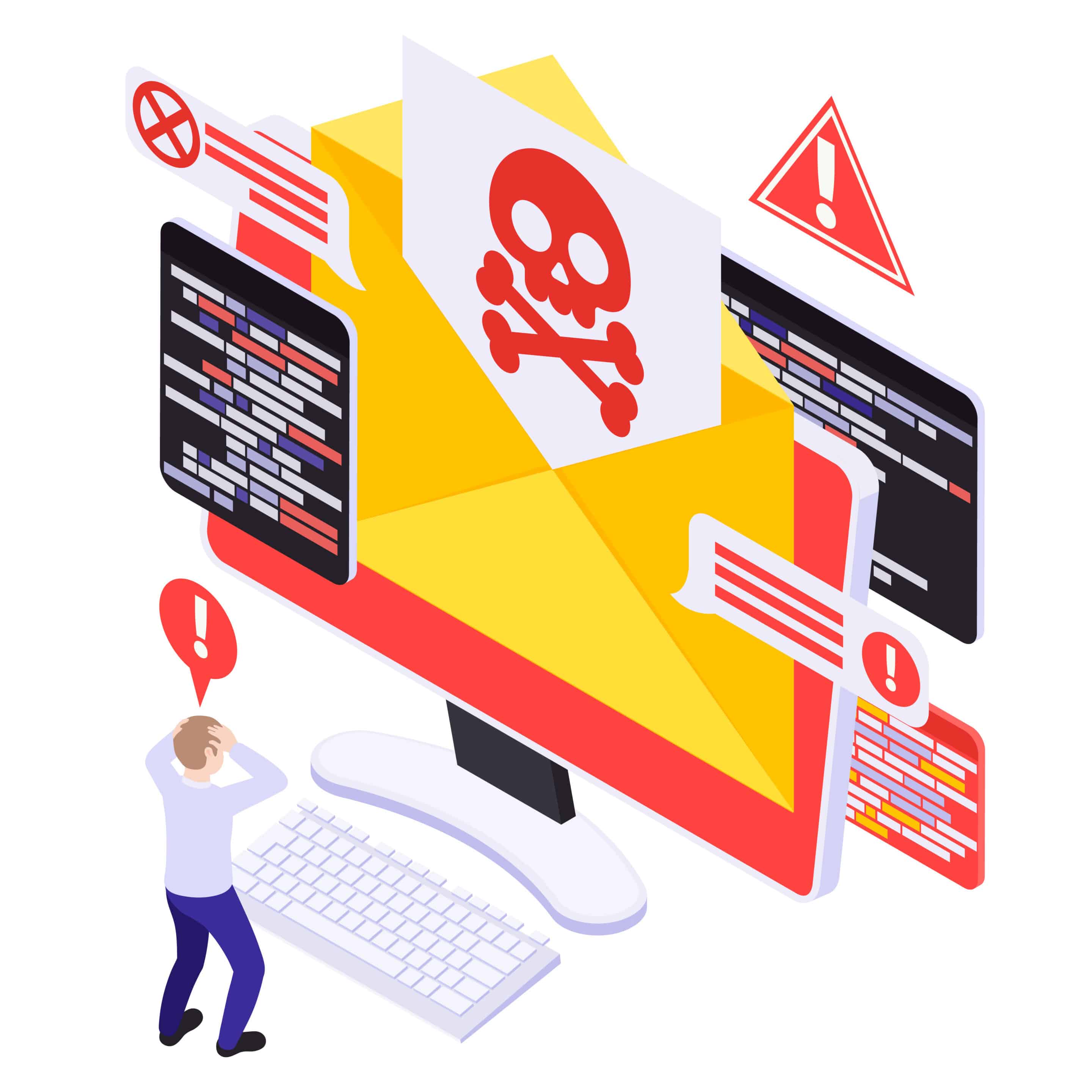In the modern digital world, cyber threats are growing more advanced and complex.
Among these threats, ransomware attacks have become a major cause for concern as they can inflict severe financial and reputational harm on both individuals and organisations.
In this blog post, we aim to provide insights into the eight common types of ransomware and offer effective measures on how to prevent DDoS attacks and ransomware. By gaining a deeper understanding of the risks involved and adopting proper security practices, you can effectively protect your data and valuable digital assets.
DDoS Attacks
Cybercriminals often employ Distributed Denial of Service (DDoS) attacks to disrupt and overpower computer networks or servers.
These attacks flood a targeted system with an overwhelming volume of traffic, making it inaccessible to legitimate users. Alarmingly, DDoS attacks frequently pave the way for ransomware incidents, which makes it important to understand their different forms and actively work towards preventing them.
Taking proactive measures to prevent DDoS attacks is crucial in protecting your digital assets and preventing potential ransomware threats.
Understanding Ransomware
Ransomware, a malicious software, holds your files hostage, by encrypting or locking them, demanding a ransom for their release.
Cybercriminals employ different types of ransomware to exploit vulnerabilities in computer systems, aiming to extort their victims. To strengthen your defences against these threats, it is advantageous to familiarise yourself with the different types of ransomware.
By doing so, you can develop a sharper awareness of potential dangers and effectively enhance your preparedness against them.

8 Common Types of Ransomware
Let’s take a closer look at these eight ransomware threats and uncover how they work.
By diving into the intricacies of these threats, you can gain a clearer understanding of how these threats operate and learn the risks they pose.
-
CryptoLocker
A well-known and dangerous ransomware that infiltrates computers by tricking users with deceptive email attachments.
Once it gains access, it encrypts files using sophisticated algorithms, making them inaccessible. The cybercriminals behind CryptoLocker demand a ransom, usually in cryptocurrency, within a specific time period.
Failing to comply with their demands often results in permanent loss of the encrypted files, leaving victims devastated.
-
WannaCry
Notorious for its global impact, WannaCry ransomware takes advantage of vulnerabilities in Windows operating systems to rapidly propagate across networks.
By exploiting a flaw in the Windows Server Message Block (SMB) protocol, WannaCry infiltrates connected computers and encrypts important files.
Victims are then confronted with a ransom demand in exchange for the decryption key. The widespread nature of WannaCry’s infection caused financial losses for individuals and businesses.
-
Locky
Employing a stealthy approach, Locky ransomware is primarily disseminated through malicious email attachments, often disguised as harmless documents or invoices.
Once accessed by the user, Locky proceeds to encrypt files found on the infected system, employing strong encryption methods to ensure their inaccessibility. Additionally, Locky appends a random extension to each encrypted file, making it challenging to identify and recover the affected data.
To regain access to their files, victims are forced into paying the ransom demanded by the attackers.
-
Cerber
Recognised for its relentless distribution tactics, Cerber ransomware utilises exploit kits and phishing emails to compromise unsuspecting victims.
Exploit kits exploit vulnerabilities in software and web browsers, allowing Cerber to gain a foothold on the victim’s system.
Once infected, Cerber commences file encryption and accompanies this process with text-to-speech messages that intimidate and force victims into complying with the ransom demands.
-
SamSam
Known for its targeted approach, SamSam ransomware focuses on infiltrating vulnerable servers rather than individual computers.
Exploiting weaknesses in server security, SamSam gains unauthorised access and proceeds to encrypt critical files, impacting the targeted organisation’s operations.
The unique aspect of SamSam lies in the cybercriminals’ ability to customise the ransom demand, often demanding high amounts from high-profile victims who are more likely to pay to regain control over their systems.
-
Petya
Notable for its destructive capabilities, Petya ransomware is known for its ability to spread rapidly across networks.
Petya’s primary objective is to encrypt the master boot record (MBR), a critical system component that enables it to boot properly. By encrypting the MBR, Petya renders the entire system unusable, effectively paralysing the victim’s computer.
Petya’s impact extends beyond individual users, with organisations often falling prey to its devastating effects.
-
Bad Rabbit
Pretending as a legitimate software update, Bad Rabbit ransomware deceives users into willingly installing it on their systems.
Once executed, Bad Rabbit proceeds to encrypt files, targeting various file types found on the victim’s machine. Bad Rabbit displays a ransom message, demanding payment for the release of the encrypted files.
Bad Rabbit’s deceptive nature and convincing disguise make it difficult for users to recognise the threat until it is too late.
-
Ryuk
Notorious for its targeted attacks on businesses, Ryuk ransomware employs complex techniques to maximise its financial gains.
Typically delivered through malicious email attachments, Ryuk specifically focuses on high-value targets, such as large corporations or critical infrastructure providers. Once inside the target network, Ryuk utilises advanced encryption methods to lock sensitive files and systems, effectively disabling the victim’s operations. The ransom demands issued by the cybercriminals behind Ryuk are substantial, often reaching millions of dollars.
This reflects their intent to extract a high amount of payments from their victims.
damage and disruption. Additionally, network monitoring and threat intelligence services provide realtime insights into emerging threats and help organisations stay ahead of cybercriminals.

Preventative Measures
Now that we have explored the common types of ransomware let’s learn some essential measures on how to prevent DDoS attacks and ransomware to protect your assets:
- Regularly update your operating systems and software to patch vulnerabilities that ransomware can exploit.
- Implement antivirus and anti-malware solutions to detect and block ransomware attacks.
- Educate yourself and your employees about email phishing and avoid opening suspicious attachments or clicking on unverified links.
- Create secure backups of your data on offline or cloud storage to mitigate the impact of a ransomware attack.
- Use strong, unique passwords for all your accounts and enable multi-factor authentication if possible.
- Invest in cybersecurity training and awareness programs to ensure that everyone in your organisation understands the importance of practising good cybersecurity.
Conclusion
In today’s digital landscape, ransomware attacks pose a significant threat to both individuals and organisations.
By familiarising yourself with the eight common types of ransomware and implementing preventative measures, you can greatly reduce the risk of falling victim to these malicious attacks.
Remember to stay vigilant, keep your systems updated, and educate yourself and your employees about cybersecurity best practices. .
It is important to remember that prevention is always better than cure. By taking proactive steps to protect your data from DDoS attacks and ransomware, you can protect your data and digital assets and minimise the potential impact of cyber threats.

